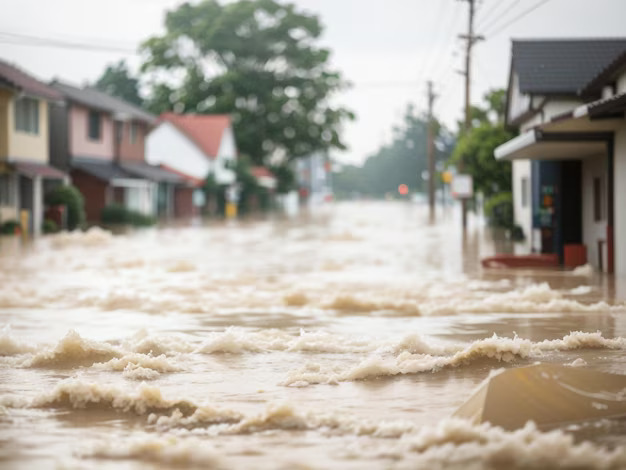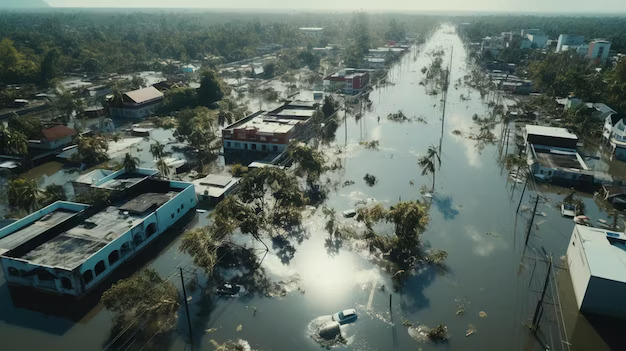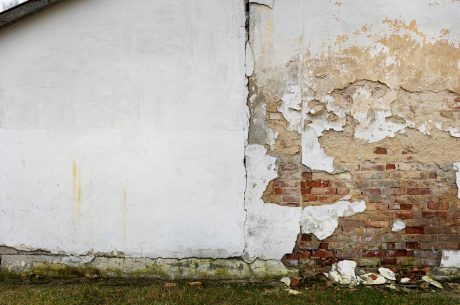Explore the comprehensive guide on “What Are the Effects of a Flood on Your Home?” Learn about potential damages, preventive measures, and coping strategies. Get insights from an expert to safeguard your home effectively.
Floods pose a significant threat to homes, causing various short-term and long-term effects. Understanding these consequences is vital for preparedness and effective mitigation. This article explores the multifaceted impact floods can have on your home and offers insights into dealing with such situations.
Understanding Floods:
Types of Floods
Floods come in various forms, each presenting unique challenges and consequences. Understanding these different types is crucial for effective preparedness and mitigation strategies.
- Flash Floods: Flash floods are sudden and intense, often occurring within minutes of heavy rainfall or the rapid melting of snow. They pose a significant risk due to their swift onset and powerful force.
- River Floods: River floods result from prolonged rainfall or the overflow of rivers and streams. They can lead to prolonged inundation and affect larger areas, causing extensive damage to communities along watercourses.
- Coastal Floods: Coastal areas can experience flooding due to storm surges, high tides, or tropical storms. These floods can result in saltwater intrusion, affecting both residential and commercial properties.
- Urban Flooding: Urban areas are prone to flooding due to impermeable surfaces like roads and buildings, which prevent water absorption. Poor drainage systems exacerbate the risk, leading to localized flooding during heavy rainfall.
- Groundwater Flooding: Excessive rainfall or melting snow can saturate the ground, leading to groundwater flooding. This type of flood may not be immediately visible but can cause long-term damage to structures and foundations.
- Pluvial Flooding: Pluvial flooding occurs when rainfall exceeds the capacity of drainage systems, leading to surface water flooding. This can result in water accumulation on roads, streets, and other low-lying areas.

Signs of Impending Floods:
Early Warning Signs
Recognizing the signs of an approaching flood is crucial for taking timely action and minimizing potential damage. Stay vigilant and be aware of the following indicators:
- Heavy Rainfall: Persistent and intense rainfall, especially in a short period, can lead to rapid water accumulation. Monitor weather forecasts and be cautious during extended rainy periods.
- Rising Water Levels: Keep an eye on water levels in nearby rivers, streams, and other water bodies. A sudden rise may indicate an increased risk of flooding, requiring immediate attention.
- Weather Warnings: Stay informed about weather alerts and warnings issued by meteorological authorities. These warnings provide valuable information about potential flooding in your area.
- Blocked Drains and Sewers: Observe the drainage around your property. Blocked drains and sewers can exacerbate flooding, especially during heavy rainfall. Clear any debris to ensure proper water flow.
- Soil Saturation: If the soil is already saturated due to previous rainfall, it becomes more susceptible to flooding. Be cautious when additional rain is forecasted on already waterlogged ground.
- Unusual Animal Behavior: Animals may exhibit unusual behavior before a natural disaster. Pay attention to the behavior of wildlife in your area, as it can sometimes indicate an impending flood.
- Weather Patterns: Understand the broader weather patterns in your region. Certain atmospheric conditions, such as tropical storms or hurricanes, can increase the likelihood of flooding.
- Localized Flooding: If there’s a history of flooding in your locality, be proactive. Past incidents can be indicative of future risks. Stay informed about the flood history of your area.
- Emergency Alerts: Keep your communication devices on and tuned to emergency alerts. Authorities may issue evacuation orders or other important instructions in the event of an imminent flood.
- Road Closures: Monitor road closures and traffic updates, as these can be early indicators of localized flooding. Avoid areas where authorities have restricted access.
Immediate Impact:
Water Damage
In the aftermath of a flood, one of the most immediate and pervasive effects is water damage. Floodwaters can infiltrate homes, causing harm to both structures and contents. Understanding the immediate impact of water damage is crucial for swift and effective response.
- Inundation of Living Spaces: Floodwaters can quickly inundate living spaces, causing extensive damage to floors, walls, and belongings. Immediate evacuation is often necessary to prevent personal harm.
- Compromised Structural Integrity: The force of floodwaters can compromise the structural integrity of a home. Foundation damage, weakened walls, and compromised support structures are common immediate consequences.
- Appliance and Electronics Damage: Household appliances and electronic devices are highly susceptible to water damage. Quick action is required to unplug and move these items to higher ground or secure locations.
- Contamination Risks: Floodwaters often carry contaminants, posing health risks. Contaminated water can affect the cleanliness and safety of the living environment, necessitating thorough disinfection.
Structural Damage
Beyond water damage, floods can inflict severe structural harm to homes, further intensifying the immediate impact on residents and properties.
- Foundation Erosion: The foundation of a home is particularly vulnerable to erosion caused by flooding. Immediate inspection is essential to assess the extent of damage and prevent long-term consequences.
- Weakened Load-Bearing Structures: Floodwaters can weaken load-bearing components of a structure, such as beams and columns. This compromise in structural integrity requires prompt attention to avoid collapse.
- Damage to Electrical Systems: Electrical systems are at risk during floods, posing immediate safety hazards. Turning off the power supply to the affected property is essential to prevent electrical accidents.
- Plumbing Failures: Floods can lead to immediate plumbing failures, causing leaks and water damage within the home. Identifying and addressing these issues promptly is crucial to prevent further complications.
Understanding the immediate impact of a flood allows homeowners to prioritize actions during the chaotic aftermath. Evacuation, safeguarding belongings, and assessing structural damage should be immediate concerns. Acting swiftly can mitigate the extent of damage and contribute to a more effective recovery process.
Health Hazards:
Mold Growth
One of the significant health hazards resulting from floods is the rapid growth of mold in damp and waterlogged environments. Mold poses various risks to both physical health and the structural integrity of homes. Understanding how to address and prevent mold growth is crucial for post-flood recovery.
- Moisture as a Breeding Ground: Floodwaters introduce excessive moisture into homes, creating an ideal breeding ground for mold. The combination of water and organic materials within the structure facilitates rapid mold proliferation.
- Respiratory Health Risks: Mold releases spores into the air, posing respiratory health risks, especially for individuals with pre-existing conditions such as asthma or allergies. Inhalation of mold spores can trigger allergic reactions or respiratory issues.
- Potential for Toxic Mold: Certain molds produce mycotoxins that can be harmful if ingested, inhaled, or come into contact with the skin. Toxic mold exposure may lead to more severe health issues, emphasizing the importance of immediate remediation.
Contaminated Water Risks
Floodwaters are often contaminated with various pollutants, including chemicals, sewage, and debris. Understanding the health risks associated with exposure to contaminated water is vital for safeguarding well-being.
- Waterborne Diseases: Floodwaters can carry pathogens that cause waterborne diseases. Ingesting or coming into contact with contaminated water may lead to illnesses such as gastroenteritis, typhoid, or hepatitis.
- Skin Infections: Direct contact with contaminated floodwater increases the risk of skin infections. Open wounds or cuts exposed to polluted water can lead to infections that require prompt medical attention.
- Vector-Borne Diseases: Stagnant water becomes a breeding ground for mosquitoes and other vectors. This increases the risk of vector-borne diseases like dengue fever or malaria, emphasizing the need for protective measures.
- Chemical Exposure: Floodwaters may contain harmful chemicals from industrial sources, agricultural runoff, or household products. Exposure to these chemicals poses immediate health risks and requires precautions during cleanup.
Understanding these health hazards is essential for individuals affected by floods. Taking proactive measures, such as wearing protective gear during cleanup and seeking medical attention for any symptoms, can significantly reduce the health risks associated with post-flood environments. Additionally, thorough and timely remediation efforts are crucial to preventing long-term health consequences.
Conclusion:
In conclusion, understanding the effects of a flood on your home is paramount for comprehensive preparedness and recovery. The multifaceted impact, from immediate water damage to long-term structural issues, necessitates proactive measures and informed decision-making.
Throughout this article, we’ve explored the diverse consequences of floods, including health hazards, damage to belongings, and the emotional toll on homeowners. By delving into the intricacies of flood-related challenges, individuals can better navigate the recovery process.
For residents in Pembroke Pines and surrounding areas, a valuable resource in times of flooding is PuroClean of Pembroke Pines. Their expertise in water damage restoration, mold remediation, and structural repair is unparalleled. As a trusted partner, PuroClean of Pembroke Pines offers timely and efficient solutions, ensuring homes are restored to their pre-flood conditions.
Remember, proactive flood prevention, community assistance, and a resilient mindset are crucial elements in mitigating the impact of floods. By staying informed, implementing preventative measures, and having access to reliable restoration services like PuroClean of Pembroke Pines, homeowners can confidently safeguard their homes against the effects of floods.
FAQs:
- How does flood insurance work? Flood insurance provides financial protection against damages caused by flooding, covering structural and content losses.
- What to do during a flood? During a flood, prioritize safety, evacuate if necessary, and follow emergency instructions. Secure valuable items and utilities before leaving.
- Can floods lead to permanent home damage? Yes, floods can cause permanent structural damage, especially if not addressed promptly. Timely repairs are essential.
- How to prevent mold after a flood? To prevent mold growth, ensure thorough drying and disinfection. Use dehumidifiers and ventilate affected areas.
- Is government assistance available for flood victims? Government aid is often available, providing financial support and resources for affected individuals. Check with local agencies for assistance programs.
- Are floods predictable? While weather patterns can indicate potential flood risks, precise prediction remains challenging. Stay informed and heed official warnings for preparedness.




 PuroClean of Ft. Lauderdale South
PuroClean of Ft. Lauderdale South